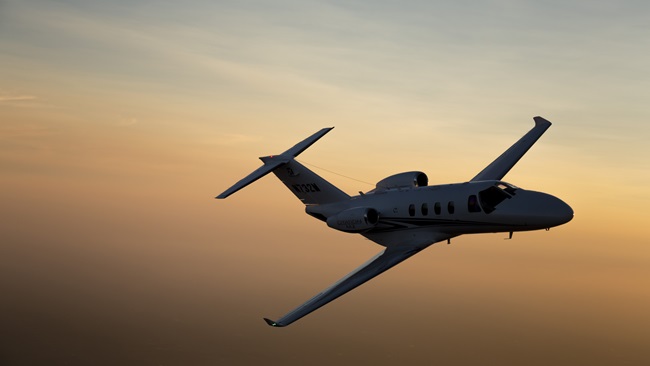Quick Look: O&N Silver Eagle
Performance in pressurized comfort

Enter the O&N Silver Eagle, powered by a 450-shaft-horsepower Rolls-Royce (formerly Allison) 250 turbine engine. Originally destined to be the Cessna 250, the manufacturer shelved the turbine aircraft project after two were built. O&N founder Myron Olson got much of the intel on the project and pursued a supplemental type certificate, taking into account the lessons Cessna learned.
The result is a solid performer that gets high marks for quality. The biggest transformation is the massive boost in takeoff and climb performance. The Silver Eagle can get off the ground in less than 1,000 feet and climb at better than 2,000 feet per minute.
And with that performance comes the simple operation of the turbine. Instead of three powerplant controls, cowl flaps, critical altitudes, and attentive temperature management for the wrung-out 310-horsepower Continental TSIO-520 in the stock airplane, the Silver Eagle has one lever for powerplant and propeller control. You can saw on the throttle all you like and not hurt a thing.
Like all piston-to-turbine conversions, the Silver Eagle gets an airspeed redline (VNE) placed where the beginning of the yellow arc (VNO) is on the piston version. In this case it’s 167 KIAS. At low altitudes with 450 shaft horsepower on tap, the Silver Eagle needs to be throttled back to stay below the red line. This airplane likes direct climbs to altitude, and steep descents near the destination.
Best speed versus economy for the Silver Eagle comes in the mid-to-upper teens, where owners report speeds of 195 to 210 KTAS on 20 to 24 gallons per hour, depending on altitude and temperature. Above FL200, the repurposed helicopter engine loses power precipitously. In fact, nearing the P210’s service ceiling of FL230, the piston version is faster than the turbine.
The cabin has six seats, but many owners remove at least one. The rearmost seats are best suited for children.
Another challenge facing piston-to-turbine conversions is fuel capacity. The thirstier engines require more fuel, and Jet A is 0.7 pounds per gallon heavier than avgas. O&N largely solved the endurance issue with a 29-gallon auxiliary tank that occupies about 50 percent of the standard P210’s luggage space. In addition, owners can opt for two 16-gallon tanks installed in the outboard wings for added fuel flexibility with a total of about 148 gallons, or about 1,000 pounds of fuel. That doesn’t leave much more than a few hundred pounds for people or luggage. Luckily, the lighter turbine engine offsets some added fuel weight.
The STC is available for unpressurized T210s as well as normally aspirated 210 models L, M, and N. With those conversions, the occupants will have to get used to supplemental oxygen. In areas where avgas is unavailable or frighteningly expensive, the turbine conversion could make sense—pressurization or not.
O&N closed its doors in 2016 after the death of Olson. Griggs Aircraft Refinishing has taken over the STCs. Griggs has not converted any additional airframes, since the market for used Silver Eagles is still pretty active. As of this writing, Controller has 11 Silver Eagles for sale ranging in price from $500,000 to $975,000. That’s a good chunk of the 110 airframes out in the field. Converting an existing airframe costs about $1 million.


